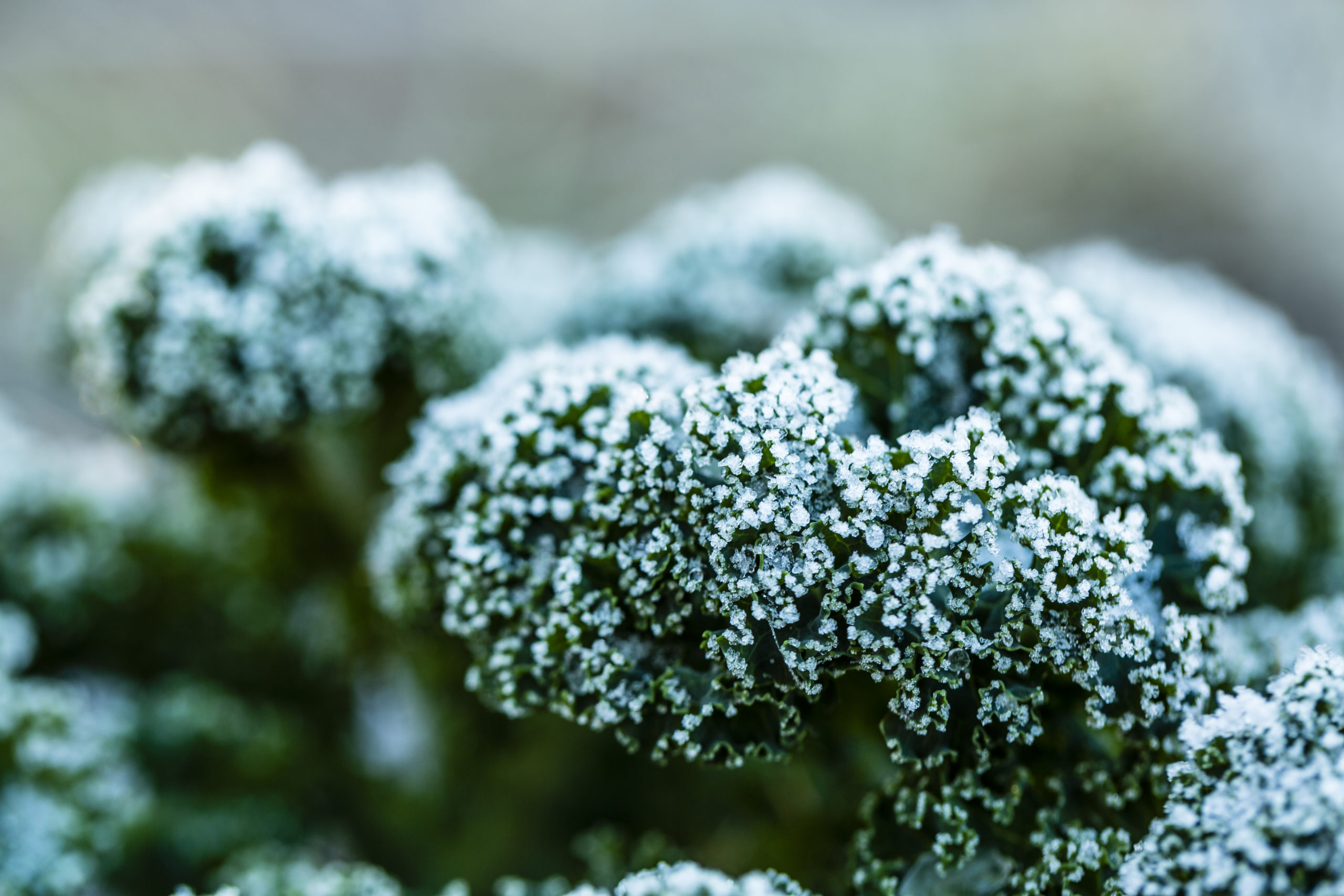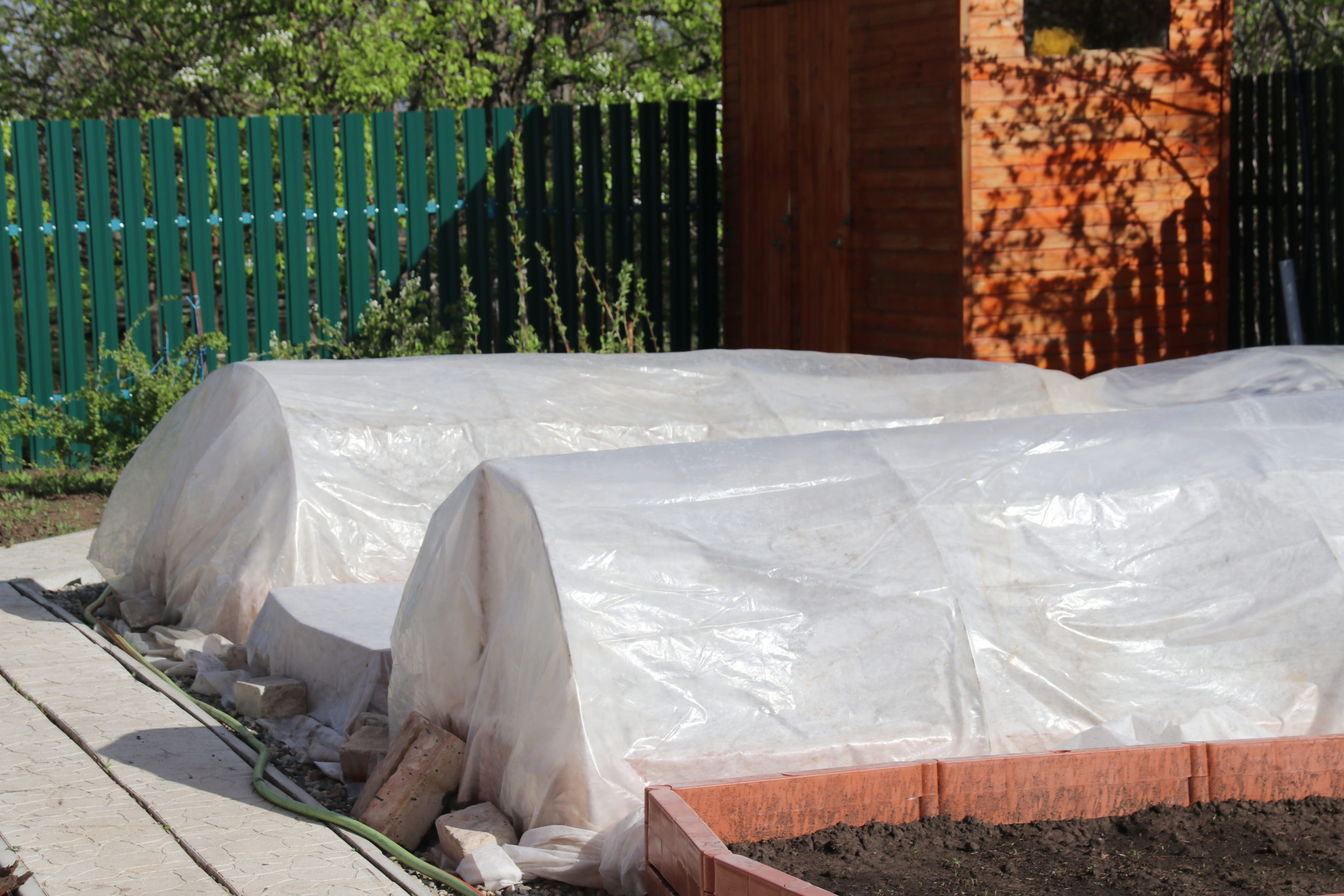
All hail kale! Kale is worthy of praise as one of North Carolina’s most cold-hardy and problem-free crops. This month, learn how to get the most out of your kale through the winter, as well as how to deter pests and diseases in the coming spring.
Winter Care:
- Kale will grow in temperatures as low as 20°F.
- If a hard freeze is expected, insulate the plants with something you have around the house, such as tarps, old sheets, cardboard boxes, or even overturned buckets.
- Try to keep the kale leaves from coming in contact with the cold covers.

- Watering the soil 24 hours before a hard freeze can actually help kale defend against the cold since moist soil retains heat better than dry soil.
- If ice or snow coats the leaves, resist the urge to shake it off. Let it melt naturally. Physically moving frozen leaves can damage plant cells and cause breakdown.
- Keep harvesting those lower kale leaves all winter so your plants get the signal to keep growing younger, softer leaves.
Pests / Diseases:
Kale has relatively few problems when it comes to pests and diseases. Aphids, cabbage worms, and black rot are a few examples.
Luckily, you can take easy steps to prevent and treat most kale issues. Set your plants up for success by practicing crop rotation – try not to plant kale, or other crops in the “brassica” family (ie. cabbage, broccoli, brussel sprouts, etc), in the same location more than once every 3-4 years.
If your kale does appear stressed (holes, discoloration, dying leaves, etc), the recommended treatment is usually in the short list below.
- Physically remove pests by hand or water stream.
- Spray leaves with an insecticidal soap.
- Remove infected plant parts.
- Add native plants so beneficial insects will come and eat the pests.
Learn more about specific kale pest/disease symptoms and control measures.
To the Kitchen:
Kale is an excellent source of Vitamin C, as well as other vitamins and minerals, and a great leafy green for its versatility. Read below to learn about kale preparation and explore delicious kale recipes.
Preparation of younger leaves:
More tender and most appropriate for salads, such as the one featured below.
Try massaging leaves with oil or salad dressing. This breaks down tough cellulose for a softer mouth feel texture while eating.
Preparation of older leaves:
If you’re not picking kale leaves straight from your garden every other day (most of us aren’t), chances are you have access to older, tougher leaves, rather than the younger, more tender leaves.
These bigger leaves are still delicious and are best sauteed, steamed, or incorporated into a soup.
Kale Recipes
Dark leafy greens, such as kale, contain lots of nutrients and are a great source of fiber. Kale is a cruciferous vegetable, quite versatile, and can be eaten raw or cooked.
If you don’t consume much dairy, consider dark leafy greens as a source of calcium. Kale is also a great source of iron, B Vitamins, and Vitamin C.




